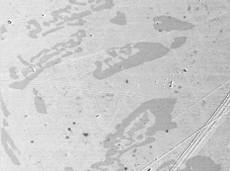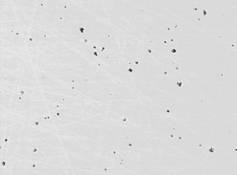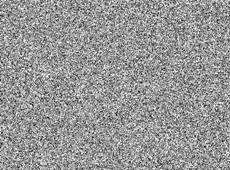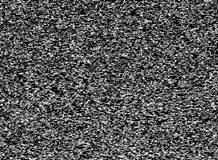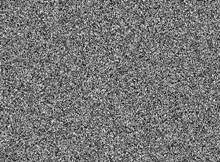
 yurikmtl@rambler.ru
yurikmtl@rambler.ru

The use of electro-slag technology for production construction materials on the based on iron aluminide.
А. Troyansky – professor of department «Electrometallurgy» of DonNTU, c.t.s., А. Ryabcev – professor of department «Electrometallurgy» of DonNTU, d.t.s., N. Galyan – graduate student of DonNTU, Y. Reshetov – student of DonNTU.
Donetsk national tehnical university, Ukraine
Principle possibility of the reception qualitative ingots based on iron aluminide by chamber electro slag remelting split spent electrode under slag containing calcium, in controlled atmosphere are described.
Alloys based on iron aluminide a new class of the especially lights perspective construction materials intended for work at temperatures – 630-680°S, exceeding working temperatures of exploitation of titanic superalloys (<600°С). Alloys based on iron aluminide FeAl (28%masAl) and Fe3Al (16%masAl), are characterized by the low cost, by the good resistance of corrosion and to oxidization, by firmness in the sulfide environments and to the wear [1].
Alloys based on iron aluminide find application in the motor industry as substitutes of stainless steel in the system of exhaust [2], as material for the disks of regenerators of the motor-car gas-turbine systems [3], are also perspective for production of separate knots and disks of the gas turbines working at the temperatures of 630—680°C [4], as materials for rollers (transports table) for the transmission of holtyroll steel bar. Also materials based on iron aluminide FeAl find application as rezistive heating elements, as they - are unmagnetic, possess sufficient durability, plasticity and specific resistance on 50–100% higher than present on sale materials for the heating elements [5]. In addition, the wares based on iron aluminide can be used wherein the high maintenances of such toxic elements as a chrome and nickel are not possible, as this takes place in the biomedical technology, industry food retail.
Application halving of iron aluminide in the net kind it is limited by their low plasticity and fragility on air at the room temperature. Nevertheless, there are a few methods for the fight with the given failing. This management by size and form of corn, the use of alloying elements, such as for example, chrome for Fe3Al and coniferous forest for FeAl, and also the use of oxide or copper coverages [6]. These developments promote probability of that, that monolithic materials based on iron aluminide can be more widely used as construction material.
As alternative, the excellent corrosive and oxidizing firmness of iron aluminide allows to apply them as coverages [7]. The method of melt liquid iron aluminide on the surface of different wares is also known, such as for example rollers of the pass metallurgical stoves, by the electro-slag technology [8].
Known methods receipt of alloys based on iron aluminide by the methods of the hot and cold pressing of powders [9,10,11], and also by the arc and plasma dispersion [12]. Also there is the Exo-MeltTM [13]process by one of perspective methods of production of iron aluminide, with the use of exothermic warmth of reaction between aluminium and other elements, for reduction of consumption external power in the flow process of melting. However the resulted methods manystage and difficult, that results in the rise of products and decline efficiency of its application in prices.
In the literature there are items of information and about the receipt of iron aluminide with the use methods of special electrometallurgy. So, in work [14] is offered and tested method of production of alloy based on iron aluminide on the twostage chart: smelting of the expended electrodes based on Fe3Al composition from steel scrap and technically net aluminium in the vacuum-induction stove and further remelting by their method of classic electro-slag remelting. The ingots got on the combined chart contained aluminium of 16%mas, carbon of 0,014-0,5%mas, and also in their composition practically there was no hydrogen which the metal was inevitably satiated during the induction melting on air. Got improvement of mechanical properties of ingots with [C] the 0,14%mas authors probably explained by the even distributing in them of the Fe3AlC inclusions, and also by the dense and fine-grained structure of ingot.
Electro-slag technology with application of alloying electrodes of satellites developed in DonNTU [15], allows to get an enough wide gamut of complicate alloying alloys, that opens possibilities for the receipt of materials based on iron aluminide with the necessary complex of properties, by the selection of necessary thermal and electric terms of process which an affinage is during not only but alloying. So in the given work the results of researches devoted are resulted to the study of possibility receipt of ingots based on iron aluminide by the methods of electro-slag remelting of the component expended electrodes under the gumboil of the CaF2-Ca system in the chamber stove.
Chamber electro-slag remelting combines to possibility of defence of electrode and melting space by the rare gas and use the metallcontaining slags securing a deeply deoxidize actively refining environment [16].
Basis of expended electrodes made roll twigs by the diameter 45 mm from the steel 50. To them, for introduction to the ingot of aluminium in the stehiometrical correlation, fastened by screw-bolts and steel wire aluminium by the twigs section 70 and 27,4 mm2. The mass stake of aluminium part in electrodes made 17%mas and 32%mas (from computation of receipt compositions based on intermetalid Fe3Al and FeAl).
Electro-slag remelting of electrodes was conducted on A-550 installation, reconditioned in the chamber ESR stove, in the controlled atmosphere of argon, in watercool crystallizator by diameter 100 and 130mm. For aiming slag applied technology of «hard» start. Made a gumboil from the fluorine calcium of the OSCh 5-2 (basis) brand and metallic calcium.
From the received ingots made polishs which explored on the optical microscope Neophot-2 and the raster on electronic microscope JEOL JSM–T3000, determining thus and local chemical heterogeneity by the X-ray spectral analysis.
The chemical analysis of shaving from different points of ingot by the titlemetric complex metric method (complexon III). Microhardness measured on microhardnessmeter PMT-3-3, pressing a diamond pyramid at a different loading.
Received macrostructure of the Fe3Al ingot had a characteristic for ESR orientation dense, without the visible bugs. The chemical analysis showed, that in the Fe3Al ingot on the average the maintenance of aluminium makes 14%mas,an in the FeAl ingot – 29%mas. The appraised statistically mean values of microhardness well comport with published before given [17].
The microstructures, exposed by the raster electronic microscopy, are presented on fig.1., they testify to that the Fe3Al ingot, has a diphasic structure which consists of matrix and the second phase as rounded branchy inclusions, thickness them on the average 50 mkm. The inclusions evenly on all ingot are located (fig.1a). Identified the second phase as perovscit Fe3AlC. The FeAl ingot has a monophase dendritus structure (fig.1 b).
Research of metal on the local chemical heterogeneity in characteristic radiation Al-k and Fe-k testifies to the even distributing in the ingot of aluminium and iron (fig.2).
Thus, the given results of researches testify to possibility receipt ingots of alloys based on the intermetalid system iron–aluminium in the chamber electro-slag stoves.
а b
Fig. 1. Results of raster electronic microscopy of the CESR ingots:
the a- Fe3Al ingot, the b- FeAl ingot, x500
а b
c d
Fig. 2 Results of the analysis on local chemical heterogeneity of standards of the CESR ingots: a – in the characteristic radiation Al-k (the Fe3Al ingot), b – in the characteristic radiation Fe-k (the Fe3Al ingot), c – in the characteristic radiation Al-k (the FeAl ingot), d– in the characteristic radiation Fe-k (the FeAl ingot), x1500 Literature
1. Liu C T, George E P, Maziasz P J, Schneibel J H 1998 Recent advances in B2 iron aluminide alloys: deformation, fracture and alloy design. Mater. Sci. Eng. A258, 84-98
2. R.R. Irvin Intermetallics offer potential for down-to-earth uses // Metalwork, News. – 1989. – 16.
3. V. K. Sikka, S. Viswanathan, C.G. McKamey Development and commercialization status of Fe3Al – based alloys // Struct. Intermetallics: Champion, Pa. Sept. 26-30, 1993.
4. Суперсплавы ІІ: Жаропрочные материалы для аэрокосмических и промышленных энергоустановок / Под. Ред. Симса Ч.Т. и др.: Пер. с англ. В 2-х книгах. Кн. 2. / Под ред. Шалина Р. Е. – М.: Металлургия, 1995. –384.
5. Lilly A C, Deevi S C, Gibbs Z 1998 Electrical properties of iron aluminides. Mater. Sci. Eng. A258, 42-9
6. Stolo. NS, Liu C.T. In: Stolo. NS, Sikka VK, editors. Physical metallurgy and processing of intermetallic compounds. New York: Chapman and Hall, 1996. p.159
7. Zheng M, He Y, Rapp RA. Proceedings of the 11th Annual Conference on Fossil Energy Materials, ORNL/FMP-97/1, May 1997, Oak Ridge National Laboratory, Oak Ridge, TN 37831,1997
8. Б. И. Медовар и др. Преспективы применения электрошлаковой технологии для получения конструкционных материалов на основе интерметаллида Fe3Al / Проблемы специальной электрометаллургии. – 1997 – № 2. – С. 17-24.
9. Заявка 438832 Япония. Способ изготовления выпускных и впускных клапанов двигателей внутреннего сгорания из алюминида / Кимугая Масаки. – Заявл. 24.05.90. Опубл. 31.01.92.
10. Rawers J.S. Tensile fracture iron–iron aluminide foil composites // Scr. Met. et Mater. – 1994. – 30, № 6.– p.701–706.
11. Solid state reactivity thermal stability and structural properties of Fe–Al nanostructured intermetallic compounds / E. Bonetti, G. Scipione, S. Enzo et al // NANO’94: 2nd Int. Conf. Nanostruct. Mater. Stuttgart., Oct. 3–7, Programme and Abstr. – 1994. – p. 149.
12. Lawrynowicz D.E., Lavernia E.J. Spray atomization and deposition of fiber reinforced intermetallic matrix composites // Scr. Met. et Mater. – 1994. – 31, № 9.– p.1277–1281.
13. Sikka VK. In Intl. Symp. on Nickel and Iron Aluminides; Materials Park, USA, ASM, 1997. p. 361.
14. R.G.Baligidad, U.Prakash, A.Radhakrishna, V.Ramakrishna Rao, P.K.Rao and N.B.Ballal: Effect of hot working on room temperature mechanical properties and stress-rupture behaviour of ESR processed Fe-16wt%Al intermetallic alloys, ISIJ International, Vol. 36 (1996), №. 9, pp. 1215-1221.
15. Радченко В.Н., Дегтярев Б.В., Сапиро В.С. и др. Исследование технологических возможностей ЭШП легированной стали с комплексным легированием ее в процессе плавки / Специальная электрометаллургия. – 1977 – №33. – С. 16-19.
16. А.Д. Рябцев. А.А. Троянский. О.В. Тарлов и др. Исследование возможности получения титан-алюминиевого сплава методом электрошлакового переплава в инертной атмосфере под «активными» кальцийсодержащими флюсами // Проблемы специальной электрометаллургии. – 2000 – № 1. – С. 16-21.
17. R.G.Baligidad, U.Prakash, V.Ramakrishna Rao, P.K.Rao and N.B.Ballal: Effect of carbon content on mechanical properties of electroslag remelted Fe3Al based intermetallic alloys, ISIJ International, Vol. 36 (1996), №. 12, pp. 1453-1458.